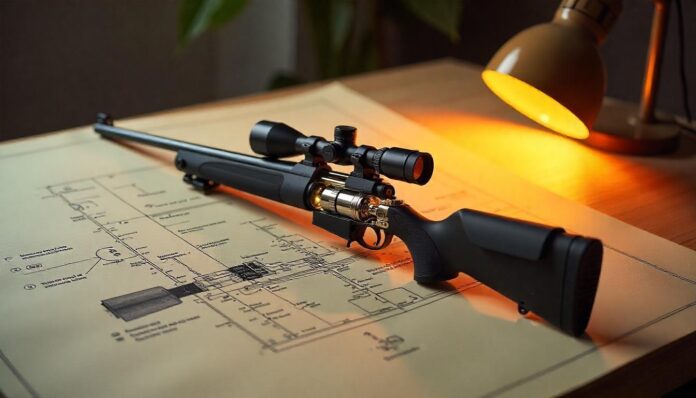Introduction to Scout Rifle Scopes
For novice and seasoned shooting enthusiasts, selecting an appropriate scout rifle scope often marks the line between impeccable precision and imprecise shooting. Scout rifle scopes have been engineered to offer accuracy and versatility, rendering them an indispensable asset for shooters across various environments. These scopes, renowned for their forward mounting design, afford users a more transparent and unobstructed field of view. Such design features are evident in products like the Burris Scout Scope Canada, which has been lauded for its modularity and reliability in various conditions. Each scope offers distinct attributes, so understanding these differences is pivotal in optimizing your shooting performance.
Key Features to Consider
When evaluating a scout rifle scope, several key features must be considered. Eye relief, or the distance from which your eye can correctly see the entire picture provided by the scope, is crucial. Extended eye relief accommodates recoil and promotes a more versatile positioning behind the firearm. A longer eye relief allows for quick target acquisition and flexibility, indispensable when dealing with moving targets.
The field of view is another feature of paramount importance, as it dictates the breadth of vision the shooter has through the scope. A broad field of view facilitates easier target tracking and engagement of multiple targets, especially in dynamic environments. Lastly, the durability of the scope cannot be overlooked. A durable scope withstands harsh weather and rigorous use without significant degradation. Those interested in understanding the nuances of weather durability should explore this guide on weather-resistant scopes, which discusses how weather conditions can impact your rifle’s performance.
Types of Scout Rifle Scopes
The shooter’s requirements and preferences frequently influence the selection of various scout rifle scopes. There are two primary categories: fixed and variable scopes. Fixed scopes feature a set magnification level, simplifying their use and often enhancing their durability because fewer moving parts are involved. They are generally lighter and offer a more robust performance, albeit at the cost of flexibility.
In contrast, variable scopes offer adjustable magnification levels, providing a significant degree of adaptability. This flexibility is particularly beneficial in scenarios where targets may appear at variable distances, necessitating quick adjustments in magnification. While they cater to broader shooting conditions, variable scopes may require more frequent maintenance. Thus, deciding between a fixed and variable scope should consider the environments and scenarios in which the shooter typically operates.
Choosing the Right Magnification
The right scope magnification balances clarity, precision, and the shooter’s specific requirements. With higher magnification, targets at a distance can be more easily managed; however, this comes at the expense of the field of view. Shooters must balance magnification and field of view to optimize their ability to track and engage targets efficiently.
Scopes with a magnification range of 2x to 7x prove effective for a wide array of shooting applications. They provide sufficient detail while retaining a broader view of the environment. This range suits most scouting, hunting, and even professional shooting scenarios. Shooters can enhance their competitive edge by selecting appropriate magnification and elevating their shooting proficiency.
Maintaining Your Scope
Proper maintenance is integral to prolonging the life and performance of your rifle scope. Begin by regularly cleaning the scope lenses using a microfiber cloth to prevent accumulations of dust and debris that can obscure vision. Avoid harsh chemicals when cleaning lenses, as they can damage the coatings critical for clarity and protection against glare.
Frequent inspections should become a routine element of scope maintenance, helping to identify any potential issues, such as cracks or misalignments, that could compromise the clarity and precision of your shot. For a comprehensive understanding of scope care, you may refer to this guide on maintaining rifle scopes, which provides step-by-step instructions on caring for your equipment correctly.
Common Questions About Rifle Scopes
Rifle scopes are a staple topic within the shooting community, often generating common inquiries. Zeroing a scope remains a vital procedure, ensuring that your shots align accurately with the crosshairs. Precision in zeroing can significantly impact performance, especially at greater distances, where even small misalignments can lead to substantial deviations.
Reticles also stir much debate and exploration among shooters. The variety of reticle styles, from the classic duplex to more advanced ballistic drop compensators, means that shooters can select one closely aligned with their preferences and shooting conditions. Each style provides unique advantages, influencing shooting strategy and precision. Such knowledge empowers users to choose reticles that best match their intended use and personal shooting style.
Conclusion
Finding the perfect scout rifle scope can significantly influence shooting accuracy and enjoyment. By carefully considering the appropriate magnification, shooters may make well-informed decisions that increase their performance on the field. Whether engaging in casual shooting or partaking in professional competitions, a fitting scope will elevate your capabilities, making each shot count more than ever before.


